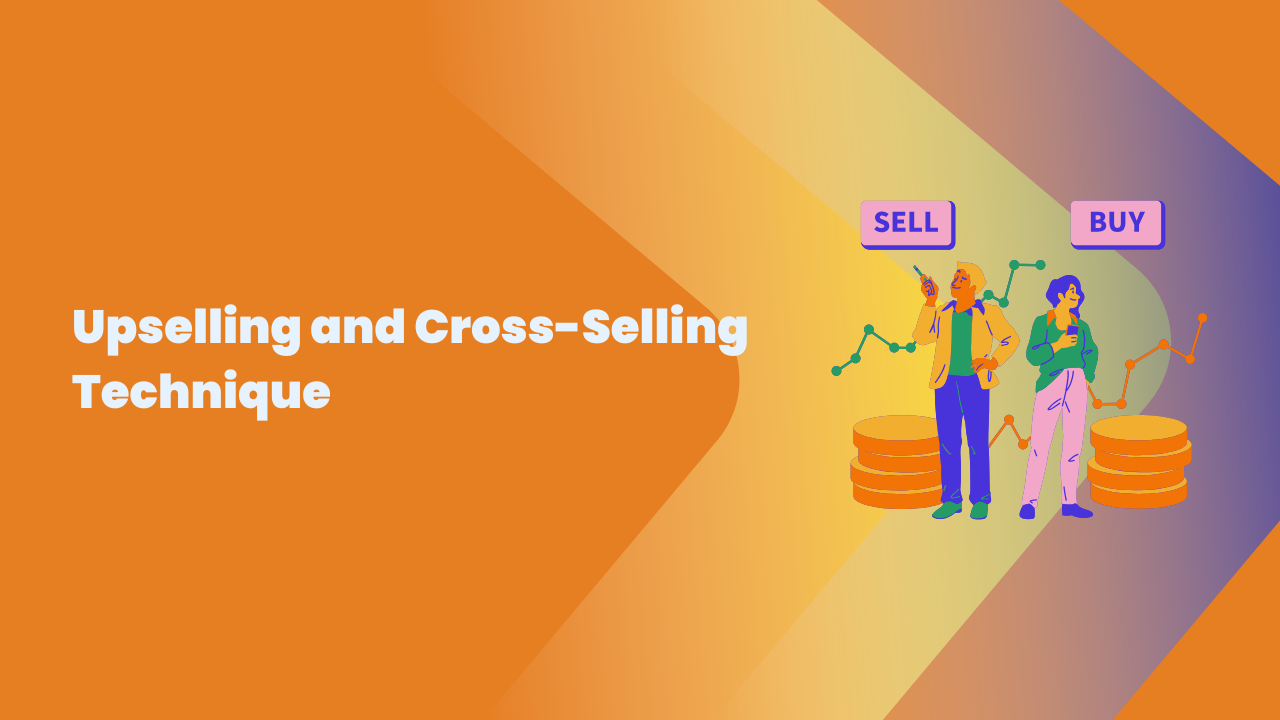Share this Article
In today’s competitive e-commerce landscape, increasing revenue doesn’t always mean attracting a larger customer base. Sometimes, the most effective way to boost your income is by optimizing your existing customer interactions. Two powerful techniques that can help you do this are upselling and cross-selling. These strategies not only increase your average order value (AOV), but they also provide additional value to your customers, enhancing their shopping experience.
This blog post delves into the concepts of upselling and cross-selling, explores how these strategies work, and offers actionable steps you can take to incorporate them into your online store to maximize your revenue. Whether you're a new e-commerce store owner or have been selling online for years, mastering upselling and cross-selling can be a game-changer.
Understanding Upselling and Cross-Selling
Before implementing any upselling or cross-selling techniques, it's important to clearly define what these terms mean and how they differ:
- Upselling is the practice of persuading a customer to purchase a higher-end version of the product they are already considering or to upgrade to a more expensive alternative. The goal is to increase the value of the transaction by encouraging the customer to spend more money on an upgraded or premium version of the original product.
- Cross-selling, on the other hand, involves recommending related products or complementary items that enhance or add value to the customer’s original purchase. This can help improve the overall shopping experience by providing solutions that work well together.
Both upselling and cross-selling work by capitalizing on the customer's intention to buy and offering them options that either enhance their purchase (upselling) or make it more complete (cross-selling).
Why Upselling and Cross-Selling Work
You might wonder why upselling and cross-selling are so effective. The key reason lies in the psychology of shopping. When customers are in the buying mindset, they’re more open to making additional purchases. Rather than requiring new customers to make a separate visit to your store, these strategies help you maximize revenue from existing visitors who are already prepared to spend money.
Here are some specific reasons these strategies are effective:
- Boosting Average Order Value (AOV): When you upsell or cross-sell, you encourage customers to spend more money than they originally planned. This increases the AOV and helps you generate more revenue from every customer interaction.
- Enhancing the Customer Experience: Upselling and cross-selling, when done right, help customers find products that are truly beneficial to them. If done in a personalized and relevant way, these techniques can improve the overall shopping experience and make the customer feel that their needs are being met.
- Building Stronger Relationships and Loyalty: By offering complementary items or upgrades, you’re demonstrating a deep understanding of what the customer might need, which builds trust. Satisfied customers are more likely to return and purchase again in the future, improving customer retention.
- Minimizing Cart Abandonment: Suggesting additional products during checkout or after a customer has added items to their cart can reduce the chances of cart abandonment. Customers may feel encouraged to complete their purchase when they see added value or discounts.
Strategies for Upselling in Your Online Store
Now that we understand what upselling is and why it works, let’s look at actionable strategies for implementing upselling in your online store.
Offer Upgraded Versions of Products
The simplest and most effective form of upselling is to suggest a premium or higher-quality version of the product a customer is already interested in. This can be done by showcasing the added features or benefits that make the more expensive product a better value in the long run.
- Example: If you're selling laptops, offer a model with more storage, a faster processor, or an extended warranty. Customers who are already looking at a basic version of a product may be willing to spend more if they see the added benefits.
Bundle Products Together
Bundling is a strategy that combines the original product with a premium version or additional accessories, which can be presented as a package deal. Bundles often come at a discounted rate compared to purchasing each item individually, making them more appealing.
- Example: If a customer is buying a fitness tracker, offer them a bundle that includes a set of wireless headphones, a fitness app subscription, or a carrying case. Bundling products creates a sense of added value, making customers feel they’re getting more for their money.
Highlight the Value of Premium Features
When upselling, it's important to not just show the customer a more expensive product but to also explain why it’s worth the extra investment. Make sure to highlight the benefits of the premium product, such as better performance, durability, or unique features that cater to the customer’s needs.
- Example: If you're selling skincare products, you might upsell a luxurious anti-aging serum by emphasizing its unique ingredients, faster results, and longer-lasting effects compared to a basic moisturizer.
Utilize Persuasive Product Descriptions
Your product descriptions play a crucial role in upselling. Use persuasive language to show customers how upgrading to a higher-end product will benefit them. Focus on the long-term advantages of the more expensive item and explain how it’s a smarter investment.
- Example: A description for an upgraded camera might mention how the better model has higher resolution, more lenses, and better image stabilization, making it ideal for professional photographers.
Strategies for Cross-Selling in Your Online Store
Cross-selling involves suggesting additional products that complement the customer’s initial purchase. Here’s how to do it effectively:
Suggest Complementary Products
Once the customer adds a product to their cart, recommend items that would enhance their purchase. Complementary products should naturally go hand-in-hand with the original product, offering a practical solution that the customer may not have considered.
- Example: If a customer is buying a phone case, you can cross-sell screen protectors, phone chargers, or other accessories that pair well with the product.
Show “Frequently Bought Together” Recommendations
One of the easiest ways to cross-sell is by displaying products that are often purchased together. This can be done by highlighting “Frequently Bought Together” or “You May Also Like” sections on your product pages or in the cart.
- Example: If a customer is buying a set of golf clubs, you could show them golf balls, tees, or a golf bag as items frequently purchased alongside clubs.
Create Discounted Bundles
Create bundles of complementary products and offer a discount for purchasing the entire set. This encourages customers to buy more items while feeling like they are getting a good deal.
- Example: Offer a discount when customers buy a vacuum cleaner and a set of cleaning attachments or additional filters, making the bundle more appealing than buying the items individually.
Suggest Add-Ons During Checkout
The checkout page is a great opportunity for cross-selling. Since customers are already committed to making a purchase, it’s an ideal time to offer them related products that will enhance their experience.
- Example: If a customer is checking out with a laptop, display recommendations for external hard drives, laptop stands, or software they might need.
Best Practices for Upselling and Cross-Selling
To ensure your upselling and cross-selling efforts are effective, follow these best practices:
Be Relevant and Personalized
The most important aspect of successful upselling and cross-selling is relevance. Make sure the products you recommend align with the customer’s interests and needs. The more personalized the suggestion, the higher the chances of conversion.
- Example: If a customer regularly purchases eco-friendly products, suggest more sustainable alternatives as part of their upsell or cross-sell strategy.
Avoid Overwhelming the Customer
Don’t bombard your customers with too many options or overwhelming suggestions. A few well-targeted recommendations are more likely to be appreciated than an entire page full of cross-sell and upsell offers.
Use Clear and Persuasive Language
When promoting upsell or cross-sell products, use language that emphasizes the added value of the recommended items. Highlight how the product will enhance the customer’s experience or make their life easier.
Use Data to Guide Your Recommendations
Leverage customer data to make informed decisions about what products to recommend. Analyze browsing history, past purchases, and preferences to offer relevant upsells and cross-sells.
Test and Refine Your Approach
Regularly assess the effectiveness of your upselling and cross-selling efforts. Use A/B testing to try different methods of product placement, pricing, and messaging to see which strategies work best. Adjust based on what drives the highest conversion rates.
Conclusion
Upselling and cross-selling are vital techniques for maximizing revenue in your online store. By offering customers products that enhance their original purchase or upgrade to a more premium version, you can significantly increase your store’s average order value without needing to attract more customers.
To be successful with upselling and cross-selling, you must focus on relevance, personalization, and clear communication of value. Done correctly, these strategies not only increase sales but also improve the customer’s experience, resulting in stronger relationships and long-term loyalty.
By applying these techniques thoughtfully and strategically, you can see a significant improvement in your store’s performance and revenue. The key is to stay focused on the customer’s needs and provide them with value-driven suggestions that enhance their shopping experience.
Categories:
Sales & Conversion
Tags:
CrossSelling







